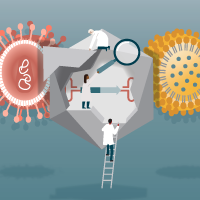AAV capsids separation is critical for advancing gene therapies
Cell & Gene Therapy Insights 2024; 10(3), 503–511
DOI: 10.18609/cgti.2024.063
AAVs are widely used vectors in gene therapy. During the process of AAV viral vectors production, complex process and product related impurities are introduced. Anion exchange chromatography is one of the most widely used downstream purification processes for separation of empty and full AAV capsids. However, to achieve baseline separation between empty and full, as well as resolution of different AAV capsids, new approaches are required to meet increasingly stringent safety and efficacy criteria. Although anion exchange chromatography is a powerful tool in many rAAV manufacturing processes, it sometimes reaches its limits in separation of the target entity from other product-related impurities. Therefore, chromatographic methods that enable better separation between different AAV capsids are sought after. In this paper, an improved anion exchange analytical method is presented. It delivers enhanced separation of full AAV capsids from other common product-related impurities such as aggregates, and empty, partially filled, high density, or damaged capsids. The improved anion exchange analytical method has been shown to be applicable for different AAV serotypes. Importantly, it exhibits linear elution properties. Favorably, the improved anion exchange method can be used for both analytics and manufacturing of full AAV capsids.
